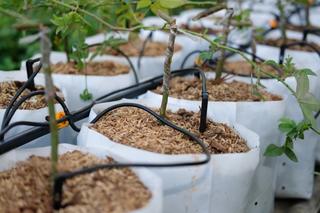When Spring’s Sprung, Is Your Lawn Ready?


6 steps to getting great green
When you live in the country, one of the benefits is looking out over a lush, even, and green lawn. And we all know there are few smells that compare with the scent of freshly-mowed grass on a lovely summer day.
Springtime’s here, with summer coming. Let’s get busy.
One: take a walk
As soon as snow melts, take a walk around the lawn. Collect any deadfall from trees, and pay attention to any areas of winter damage, bare spots, divots, or places that look “less-than” when compared with the whole.
Scout for snow mold, a winter-related disease affecting grasses from mid-fall to mid-spring. It often grows under snow cover, primarily affecting perennial the, fescues, and Kentucky bluegrass. You’ll know by the discolored, dead grass.
Two: Fix and test
Scratch up any bare spots and when the soil is above 55 degrees, reseed with a quality seed just to give the lawn some opportunity to fill in with its own shoots.
Now is a good time to think about soil testing—which might give some insight into the bare spots or anemic-looking areas. Testing your soil will tell you pH level, nutrient content, and other factors that impact the growth of your grass so you can make informed decisions about fertilizers, watering schedules, and other aspects of lawn care.
Dig several small holes with a hand trowel or spade, and take samples from the edge of each hole, about 2-4 inches down. You don’t need much. Mix the samples together and let them dry.
Many lawn care companies provide soil testing service, along with the cooperative extension service in your state. For general analysis, soil test kits are available from most hardware-focused big box stores.
Soil test results usually offer recommendations to adjust pH, macronutrients needed, and other means of bringing the soil up to snuff.
Three: Making it green
Armed with knowledge of any shortcomings in your soil, fertilization will provide essential nutrients that promote growth and development. However, it's crucial to apply the right type of fertilizer at the right time.
Too much fertilizer can cause the grass to grow too quickly, leading to weak roots. Avoid fertilizing during hot and dry weather, as this can burn the grass.
Four: Breathe in
While early in spring, consider aeration. This involves creating small holes all over the lawn to allow air, water, and nutrients to penetrate into the root layer.
This process can help break up compacted soil, allowing the roots to grow deeper into the soil. Aeration can also improve water absorption, leading to a healthier and greener lawn.
Five: Hydration
Watering is crucial to maintaining a green lawn, so pay attention to springtime rainfall to avoid under- or overwatering.
How much will depend on your soil and climate, but experts agree the best strategy is to water your lawn deeply, but not too often. This will encourage roots to grow deeper into the soil, making your grass become more drought-tolerant for when it doesn’t rain.
Six: Mowing, finally
We are up to mowing. The Number One contributing factor in producing a healthy-looking lawn is this: Sharpen your mower blades! Sharp blades actually slice the top off the grass, whereas a dull blade bludgeons it in two, resulting in damaged grass blades and a brown-looking lawn.
Adjust mower height to cut off only the top-one-third. It also helps to slightly adjust your mower height upward as summer’s heat builds, thereby giving a little more shade to the roots.
Lawn care is a continuous process, so be patient, stay consistent, and keep learning to achieve the best results.
The idea of a perfectly groomed lawn didn’t come about until relatively recently, according to Virginia Scott Jenkins’ book “The Lawn: A History Of An American Obsession.” She traces today’s modern lawn back to English aristocrats; we can thank Thomas Jefferson’s travels to England and Europe for popularizing a closely-manicured “front meadow.” He incorporated that concept into his home, Monticello, in 1806.
Americans began to cultivate grass around their homes, perhaps as a nod to social status.
Those Awesome Ballpark Stripes
How do they do that, anyway?
We reached out to mower manufacturer Dixie Chopper who gave us three easy steps to produce those stripes you see in ballparks and some golf fairways.

Step 1: Always start by mowing an outline of your property to provide plenty of room for each turn at the end of your stripe.
Step 2: Drive a straight line to your perimeter, turn, come back, and continue in opposite directions for the rest of your yard.
Step 3: Almost done. Once you’re finished mowing your yard and your stripes set, take the time to take one more pass around the perimeter to clean up any imperfections. Now you have a beautiful lawn.
You can do traditional stripes, checkerboards, zig zags, or even curves for more interesting patterns. Repeated mowings enhance the effect. However, it is recommended that you change patterns every few weeks to prevent ruts in your yard.
What tasks to do and when
https://m2enterprises.com/advice/how-to-prepare-your-lawn-for-spring
Don’t forget to get everything ready
Tags:Garden & Landscape

Acreage Life is part of the Catalyst Communications Network publication family.














